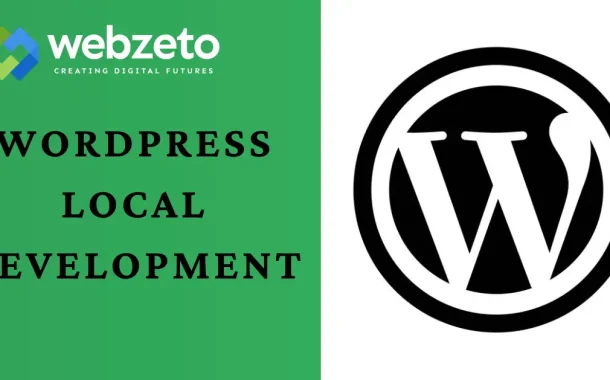The benefits of local development are significant. First, it provides a risk-free environment to test changes, ensuring your live site remains unaffected. It speeds up the development process since you don’t rely on internet connectivity for changes. You can also easily debug issues with tools not available on live servers.
Table of Contents
Table of Contents
Setting Up a Local Development Environment
Setting up a local development environment is essential for building and testing your WordPress site safely.
Choose Your Local Server Software
First, you need to choose a local server software that fits your needs. Popular options include XAMPP, MAMP, and Local by Flywheel. XAMPP works on Windows, macOS, and Linux. MAMP is great for macOS and Windows users. Local by Flywheel is designed specifically for WordPress development and works on both Windows and macOS. These programs create a local server environment on your computer where you can run WordPress.
Install and Configure Your Local Server
Next, download the installer for your chosen software from its official website. Follow the installation instructions provided. Once installed, you may need to configure some settings. Usually, this means selecting default options or customizing server ports and database configurations. For example, in XAMPP, you might need to start the Apache and MySQL modules. This setup creates the environment needed to run WordPress locally.
Download and Install WordPress Locally
Now, go to the official WordPress website and download the latest version of WordPress. After downloading, unzip the file and move the extracted WordPress folder to your local server’s root directory. For XAMPP, this folder is usually named htdocs. Next, open your web browser and type http://localhost/your-folder-name in the address bar. This will start the WordPress installation process. Follow the prompts to set up WordPress, including choosing a language and entering site information.
Setting Up a Database
Before completing the WordPress setup, you need a database. Open phpMyAdmin from your local server’s control panel. In phpMyAdmin, create a new database by entering a name and clicking “Create.” Remember this name, as you’ll need it during the WordPress installation. The database will store all your site’s data, such as posts, pages, and settings.
Completing WordPress Setup
Go back to the WordPress setup in your browser. You’ll be asked to enter database details. Type the database name you created, and use root as the username and leave the password field blank if you’re using XAMPP or MAMP. The database host is usually local host. After entering these details, click “Submit.” Follow the remaining steps to complete the installation, like setting up an admin account and site name.
Database Management
Managing your database is a crucial part of WordPress local development. It involves setting up a database, handling its contents, and ensuring your data is secure and easily accessible.
Setting Up a Database
To set up a database, you first need to access phpMyAdmin, which is included with most local server software like XAMPP, MAMP, or Local by Flywheel. Open your local server control panel and look for a button or link to phpMyAdmin. Once inside phpMyAdmin, you will see an option to create a new database. Click on it, enter a name for your database, and click “Create.” This new database will store all the data for your WordPress site, including posts, pages, and settings.
Managing Databases with phpMyAdmin
phpMyAdmin is a web-based tool that makes it easy to manage your databases. After creating your database, you can start adding tables, importing data, or making other modifications. In WordPress, you generally won’t need to manually create tables since WordPress does this during installation. However, phpMyAdmin allows you to view and manage the tables WordPress creates. You can browse the tables, run SQL queries, and manage the data directly. This tool is particularly useful for troubleshooting issues, optimizing performance, or manually backing up your data.
Importing and Exporting Databases
Sometimes, you need to move your database between different environments, such as from local to live server or vice versa. phpMyAdmin makes this easy with its import and export functions. To export your database, go to phpMyAdmin, select your database, and click on the “Export” tab. Choose the export method (usually “Quick” is sufficient) and format (SQL is common), then click “Go” to download the file. To import a database, select the database you want to import into, click on the “Import” tab, choose the file you exported earlier, and click “Go.” This process is essential for creating backups, migrating sites, or syncing data between different environments.
Working with Themes and Plugins
WordPress Themes and WordPress plugins are essential components of WordPress that allow you to customize and extend your site’s functionality.
Installing Themes and Plugins Locally
To install themes and plugins locally, first access your WordPress dashboard by going to http://localhost/your-site-name/wp-admin. Navigate to the “Appearance” section for themes or the “Plugins” section for plugins. You can search for free themes and plugins directly from the WordPress repository. Click “Install” and then “Activate” to add them to your site. For premium or custom themes and plugins, you can upload the zip file by clicking “Upload Theme” or “Upload Plugin” and then following the prompts.
Developing Custom Themes
Creating a custom theme allows you to design a unique look and feel for your site. To start, create a new folder for your theme in the wp-content/themes directory. Inside this folder, you’ll need a few essential files like style.css (for your theme’s CSS) and index.php (the main template file). From here, you can add other template files and styles as needed. Use a code editor like Visual Studio Code or Sublime Text to write and edit your theme’s code. As you make changes, you can see them live by refreshing your local site.
Creating Custom Plugins
Custom plugins let you add specific functionality to your site without changing the theme. To create a plugin, go to the wp-content/plugins directory and create a new folder for your plugin. Inside this folder, create a PHP file with the same name as your plugin. At the top of this file, add a comment block with your plugin’s name, description, version, and author. Then, start writing the code for your plugin. This might include adding shortcodes, custom post types, or integrating third-party APIs. Activate your plugin from the WordPress dashboard to test its functionality.
Using Version Control (Git)
Version control is essential for managing changes to your themes and plugins. Git is a popular version control system that tracks changes and allows you to collaborate with others. To use Git, initialize a Git repository in your theme or plugin directory. Commit your changes regularly with meaningful commit messages. Platforms like GitHub or GitLab can host your repositories, making it easy to share your work and collaborate. Version control ensures that you can always roll back to a previous version if something goes wrong and keeps your development process organized.
Local Development Workflow
A well-structured local development workflow is essential for efficient and error-free WordPress development.
Setting Up a Local Development Site
Begin by setting up a local development environment as previously described. Install WordPress locally and configure your site. Once WordPress is running, set up your theme, plugins, and any initial content you need for development. This setup mirrors your live site, providing a safe space to make changes and test new features. It’s essential to maintain a similar configuration to your live environment to ensure consistency.
Synchronizing with Live Site
To keep your local site up-to-date with your live site, regularly sync the data. This includes both files and the database. Export the database from your live site using tools like phpMyAdmin or a WordPress plugin like WP Migrate DB. Import the database into your local environment using phpMyAdmin. Sync your files by downloading them via FTP or using a version control system like Git. Regular synchronization ensures that your local site reflects the current state of your live site, making your testing and development more accurate.
Working with Staging Environments
Staging environments are intermediate sites where you can test changes before pushing them live. They act as a bridge between your local development site and your live site. To set up a staging environment, clone your live site to a subdomain or a subdirectory on your server. Deploy changes from your local site to this staging environment first. Thoroughly test all changes in staging to ensure they work correctly. This extra layer of testing helps catch any issues before they affect your live site, providing an additional safeguard.
Regular Backups and Version Control
Regularly back up your local development site, including both files and the database. Use plugins like UpdraftPlus for automated backups. Implement version control with Git to track changes to your code. Commit your changes frequently with clear commit messages. Using a platform like GitHub or Bitbucket allows you to collaborate with others and manage code more effectively. Backups and version control provide security and flexibility, allowing you to revert to previous versions if needed and ensuring your work is never lost.
Deployment to Live Site
Once changes have been thoroughly tested in your local and staging environments, you can deploy them to your live site. Start by making a backup of your live site. Use tools like FTP or version control to upload your files. For database changes, export the database from staging and import it into your live site’s database. Double-check everything to ensure the deployment went smoothly. Post-deployment checks include verifying that all features work as expected, and there are no broken links or missing files.
Testing and Debugging
Effective testing and debugging are crucial for ensuring your WordPress site runs smoothly.
Setting Up Debugging Tools
Enable WordPress debugging by editing your wp-config.php file to turn on debug mode. This logs errors to a file, which helps in identifying issues without displaying them to users. Use the Query Monitor plugin for detailed insights into database queries, PHP errors, hooks, and more. This plugin provides valuable information directly in your WordPress admin bar.
Testing Code Changes Locally
Before making changes live, thoroughly test them in your local development environment. Check different browsers and devices to ensure compatibility. Use tools like BrowserStack for cross-browser testing. Simulate various user scenarios to ensure everything works as expected. This step helps you catch issues early and ensures a seamless user experience.
Using Browser Developer Tools
Modern browsers have built-in developer tools for debugging HTML, CSS, and JavaScript. Right-click on your site and select “Inspect” to open these tools. Use the Console tab to view JavaScript errors and logs, the Network tab to monitor network requests, and the Elements tab to inspect and modify HTML and CSS. These tools help you quickly identify and fix front-end issues.
Error Logging and Manual Debugging
Besides using WordPress debug logs, manually log errors by writing custom messages to a log file. This helps track specific issues. When you encounter an error, use the logs and debugging tools to identify the cause. Check the debug log for error messages and use Query Monitor to pinpoint slow queries or problematic hooks. Once identified, fix the errors and test again.
Final Testing and Post-Deployment Monitoring
Perform final testing in your local and staging environments before deploying changes to your live site. Ensure all functionalities work as intended and there are no errors or performance issues. After deploying, monitor your live site closely using tools like Google Analytics and server logs. Quickly address any issues that arise to ensure a smooth user experience.
Conclusion
WordPress local development is essential for building and testing your site safely. By setting up a local environment, you can experiment with themes, plugins, and custom code without affecting your live site. This process ensures that any changes you make are thoroughly tested and debugged before going live.
Using tools like phpMyAdmin, Query Monitor, and browser developer tools helps you manage your database, monitor performance, and fix errors efficiently. Regular synchronization between your local, staging, and live environments keeps everything up-to-date and consistent.














